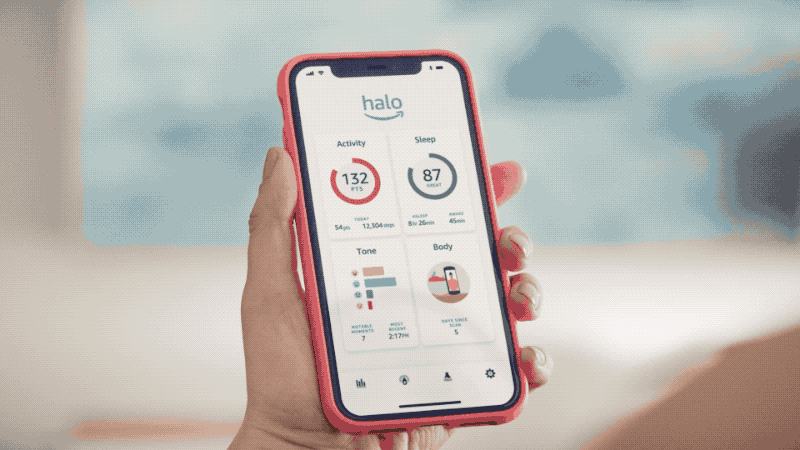“I’d be more worried about the camera on your phone than I would be about a drone,” Amazon devices SVP Dave Limp told me in an interview a few hours after yesterday’s big Echo event. The drone in question is the Ring Always Home Cam, an autonomous indoor drone that can use a map of your home to independently fly around to check out strange noises or run a patrol when you’re not home.
The drone was just one of well over a dozen product announcements Amazon made yesterday — including a full-on game streaming service to compete directly with Microsoft and Google. But everybody’s visceral reaction to the idea of an Amazon-powered drone flitting its camera about your house is what will be remembered.
Box CEO Aaron Levie pretty much summed it up, tweeting, “If 2020 wasn’t already dystopian enough for you, Amazon just announced an indoor flying drone camera.” The second-most popular response is that this thing would get absolutely wrecked by an overeager cat or dog.
It was my first reaction, too — and even now, when I look at a video of the drone floating out of its dock to roam an empty house, I still feel unsettled. But I also feel unsettled by the idea of having a security camera connected to a cloud inside my house in the first place. In fact, I would argue that’s worse. At least with this drone, you are very aware when it’s recording because it’s loudly making drone noises. Amazon hilariously calls this “privacy you can hear.”
Hilarious, but also accurate. With a compromised indoor security camera, you’d never know somebody was looking in. And it’s happened — with people experiencing strangers taking over their cameras because they reused their password. Or worse, because a Ring employee was looking at video they shouldn’t have been.
But the drone creeped people out in ways the existing security cameras didn’t, and I think it’s because it moves without directly being controlled. That adds a level of agency and intentionality. A stationary camera sees what we point it at. A drone could see anything in our house. Instead of rising from a plastic docking station, it might as well be rising straight out of the uncanny valley.
Amazon is building a track record of products that make people do a double-take when they think about how it might affect their privacy. The drone, the other Ring cameras and features, the Sidewalk mesh network, the Halo app that asks you to be scanned in your underpants: there’s almost a shamelessness to them. It’s like Amazon has taken a dare to make the most unsettling consumer products it could.
There is also a strange tension between products that genuinely feel creepy and the reality that Amazon is doing a lot of the right things when it comes to privacy. It has added two-factor authentication to Ring cameras and will soon offer the option for end-to-end encryption for video, so nobody but you could possibly access it. It’s adding more ways to delete your data by talking to Alexa, and it has a privacy control dashboard that is quite good.
I’m no Amazon apologist, though. Even though I don’t think the drone is nearly as problematic as the rest of the internet seems to, I still have a boatload of worries about other products from Amazon. Ring has toed (and sometimes crossed) the line of being too cozy with law enforcement, and I worry about its effects on neighborhood cultures, in general.
Then there’s Sidewalk. It’s Amazon’s new mesh network that allows its devices and third-party devices to see and communicate with each other at medium distances — say, less than half a mile. As with trackers like Tile (which will soon work with Sidewalk), devices can securely communicate their location through the mesh network, and Sidewalk can also be used for simple commands for IoT devices, like checking to see if your mailbox was opened.
Sidewalk isn’t live yet, but it was mentioned as a key spec in many of the products Amazon announced yesterday. That means, as people buy these products, Amazon’s Sidewalk network will soon begin blanketing cities. It won’t take very many of them, either, as Amazon noted last year.
For example, just a week ago Amazon employees and their friends and family joined together to conduct a test using 700 Ring lighting products which support 900 MHz connections. Employees installed these devices around their home as typical customers do, and in just days, these individual network points combined to support a secure low-bandwidth 900MHz network for things like lights and sensors that covered much of the Los Angeles Basin, one of the largest metropolitan regions in the United States by land area.
I’ve written about my concerns with Sidewalk in the past. As with the drone, I instinctively recoil at the idea of an unregulated wireless mesh network that can locate gadgets being built simply because people want an Echo or a Ring doorbell.
But again, as with the drone, Amazon has privacy-focused answers for each of the most obvious concerns I could think of. It’s spent the past year stress-testing its security to harden it against hackers who might want to use it to reveal your location. There are multiple layers of encryption and limits on bandwidth usage to prevent malfeasance. It’s opened up an API for developers and gotten Tile on board as a third-party vendor. Amazon says that any Sidewalk gateway (like an Echo) will allow a customer to turn off Sidewalk if they don’t want to participate.
(As an aside: Apple might have similar ambitions for the UWB chips it has begun putting into its more recent products. It still hasn’t announced those AirTags, and it seems to me that its UWB chips are meant for something more than just AirDrop and unlocking luxury cars.)
I probably (and yes, probably naively) trust that Amazon has carefully thought through much of that in good faith. I even believe Limp when he tells me that it’s doing a lot to protect it from hackers, that Amazon doesn’t intend to collect more data than it needs, and that it will never share location data with third parties. He can’t help but also point out that our phones’ location data has already been bought and sold by sketchy companies multiple times over.
Responsibly maintained, Sidewalk will enable all sorts of neat use cases. Ring will have a little auto-accident-detection gadget you can buy for 60 bucks that only communicates via Sidewalk — obviating the need for the subscription plans other companies and carriers charge. The fact that Amazon is confident enough to release that kind of product without bothering with an LTE connection tells me that it expects it won’t need one for it to work. Sidewalk will be everywhere.

Here’s another one: Halo, Amazon’s fitness service that allows you to create a 3D scan of your body that it can use to measure your body fat. Again: very creepy. And again, Amazon has answers for most of the immediate what-abouts when it comes to privacy and security.
It’s not the known problems that worry me. It’s the unknown unknowns. If there is any lesson we should take from the last decade, it’s that new technologies have both vast unforeseen consequences and surprising, weird loopholes.
The current form of the drone, the mesh network, and the body scanner may all be private enough to be safe to use, but even then, they still seem creepy. They come right out of a future that we suddenly aren’t so eager to rush toward anymore after the last half-decade of technological convulsions have wracked the country.
The worry isn’t necessarily that this year’s products are the problem, although it’s fair and maybe even reasonable to have that worry. It’s that this year’s products push the envelope of acceptability again, opening up a space for future products and services that will harm our privacy — or even our society.
Amazon has answers for my biggest privacy concerns, and some of them are even pretty good. But it’s the problems I haven’t thought to worry about that worry me, and I’m not sure anybody can really have an answer for those.
All the news from Amazon’s event
┏ Amazon’s fall hardware event: the 13 biggest announcements.
Echo news
┏ Amazon redesigns the Echo with a new spherical design and a custom machine learning processor.
┏ Amazon rolls out new ball-shaped Echo Dots, starting at $50.
┏ Amazon’s new Echo Show 10 moves to look at you.
┏ Amazon’s Echo Show smart displays will soon stream Netflix video.
┏ Amazon unveils new Guard Plus subscription for $4.99 per month.
┏ Amazon’s AZ1 Neural Edge processor will make Alexa voice commands even faster.
┏ Don’t worry, you can still buy a dot-shaped Echo Dot.
A new gaming service, Luna
┏ Amazon announces new cloud gaming service called Luna.
┏ Amazon’s Luna cloud gaming service sounds an awful lot like the cable of video games.
Ring news
┏ Ring plans to offer end-to-end encryption by the end of the year.
┏ Ring announces new line of security cameras for cars.
┏ Ring’s latest security camera is a drone that flies around inside your house.
┏ Amazon’s new Ring drone stops the world’s most hapless thief in bass-slapping ad.
┏ We have a few questions about Amazon’s flying indoor security camera drone.
More Amazon news
┏ The latest Eero mesh Wi-Fi routers support Wi-Fi 6.
┏ Alexa’s latest upgrades help it listen to multiple people and ask clarifying questions.
┏ Amazon announces $29.99 Fire TV Stick Lite and upgraded Fire TV Stick.










